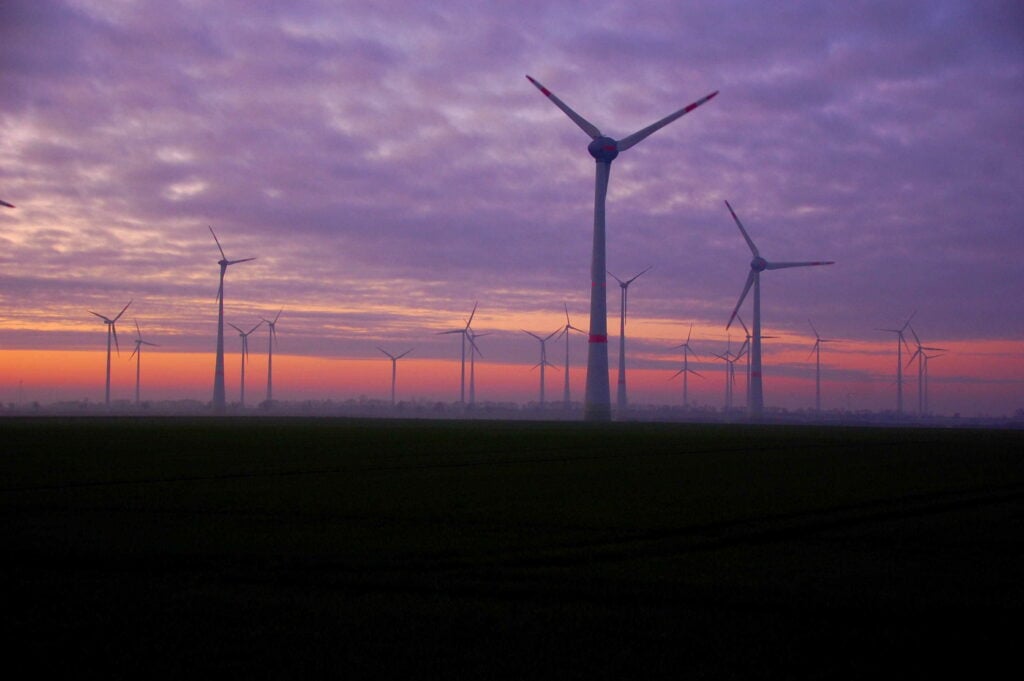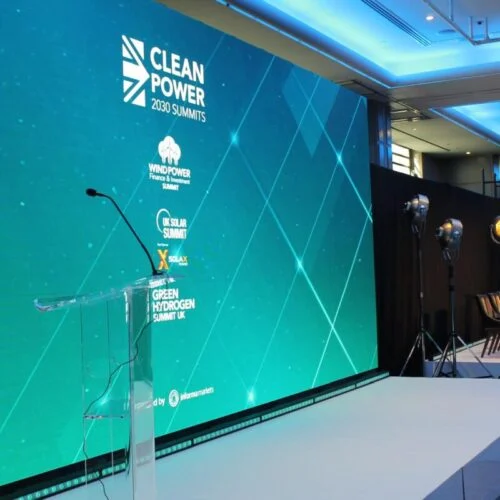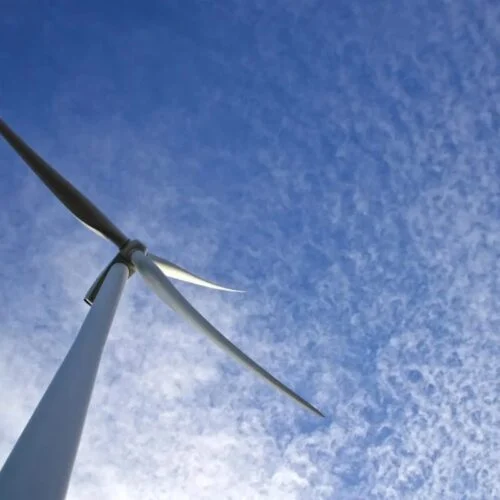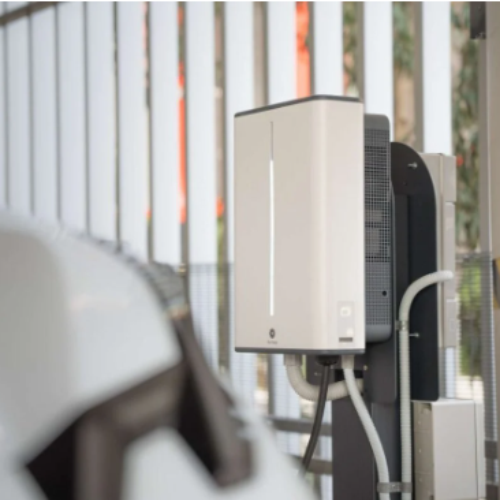National Grid ESO’s Future Energy Scenarios (FES) 2021 outline four different, credible pathways for the future of energy in Britain, details the transformation of the energy mix and flexibility, the residential sector and the transport sector.
Three of these scenarios in the tenth annual report see the country reach net zero by 2050, while the slowest of the four Steady Progression sees a 73% reduction in emissions by the middle of the century.
Leading the Way, the most ambitious, sees a combination of high consumer engagement, technology and investment enable the nation to reach net zero by 2047, before going on to reduce emissions by 103% by 2050.
While Consumer Transformation and System Transformation see different drivers enable Britain to hit its legally binding decarbonisation target.
Four key messages came out of the report, including the need for detailed policies and clear accountabilities, to be coupled with immediate and sustained focus on delivery. This will allow the momentum created by the Energy White Paper to be maintained.
Secondly, consumer behaviour will be pivotal National Grid ESO states, and must include embracing smart technology. Next, holistic energy market reform will be needed to drive flexibility, with as much as 13GW of electricity storage needed by 2030 to enable huge growth in renewables.
Finally, significant investment is needed in whole system infrastructure, enabling up to 47GW of offshore wind to be connected by 2030 and 17GW of interconnector capacity. Additionally, by 2035 at least 35TWh of hydrogen storage is needed across all net zero scenarios and a wide ranging rollout of electric vehicle charging infrastructure and heat pumps.
“Our latest Future Energy Scenarios insight reveals a glimpse of a Britain that is powered with net zero carbon emissions, but it also highlights the level of societal change and policy direction that will be needed to get there,” said Matthew Wright, head of strategy and regulation at National Grid ESO.
“Britain is making significant progress towards achieving net zero. The fundamental changes outlined in our latest FES insight show just how important a coordinated approach will be between policymakers and industry if we’re to capitalise on that momentum.”
The electricity mix: renewables take centre stage
Across all the ESO’s net zero scenarios, emissions from power sector are net negative by 2034. The sector relies on a mix of renewable energy generation, bioenergy with carbon capture usage and storage (BECCS), interconnectors and some nuclear.
In the FES’s most ambitious scenario, Leading the Way, there is close to zero unabated natural gas generation from 2035 and no growth in new nuclear. Renewables grow aggressively to meet demand in their place.
By 2050, electricity generation capacity hits 248GW with an additional 71GW of storage and interconnection. Generation output is well over twice of today at 701TWh, the FES21 found, of which 96% is made of wind, solar, nuclear and BECCS.
This is supported by high levels of interconnection, storage and some flexible hydrogen generation to meet peak demands.
By 2030, between 34GW and 77GW of new wind and solar generation could be needed to meet demand across the scenarios. And across all domestic electricity generation increases, with Consumer Transformation and Leading the Way seeing ten times more solar PV – or 912MW per year on average – installed on rooftops by 2050.
Even within the Steady Progression scenario, total electricity generation capacity grows to 201GW, with an additional 37GW of storage and interconnection. Wind, solar, nuclear and BECCS provide 92% of generation but fossil fuels still play a key role with gas generation and gas CCUS providing flexibility.
Hydrogen forms a central part of all of the net zero scenarios, allowing renewable generation to be maximised while offering a low carbon, high intensity heat solution for some applications. But there are challenges around production and transportation, the ESO notes.
Government intervention will be needed to overcome these, with support used within the Leading the Way scenario to ensure the 5GW of production capacity by 2030 target originally outlined in the Energy White Paper is met.
Along with hydrogen, energy storage will be essential for managing the grid as renewable energy capacity grows, particularly in the two to four hour range. But in 2050 the capacity of electricity storage (excluding vehicle to grid) represents just 1.1% of the 15TWh of hydrogen storage in Leading the Way scenario, 1.3% of the 12TWh in Consumer Transformation scenario and 0.2% of the 51TWh in System Transformation scenario.
Additional flexibility can be provided by heating and electric vehicles, with peak demands reduced by over 43% due to demand side response in both the Consumer Transformation and Leading the Way scenarios, whilst in the other two despite less consumer engagement DSR still reduces peak demand by over 20%.
Heating: heat pumps and hydrogen
Across the four scenarios, National Grid ESO evaluated different paths to decarbonise the heating sector in Britain. Currently, the country’s 28.5 million homes accounts for around 480TWh of energy demand, or 35% of its total level. Because the sector is heavily reliant on natural gas currently, this means that it is responsible for about 14% of the UK’s total emissions.
In the Leading the Way scenario, 2.6 million homes have heat pumps by 2025 thanks to strong government policy and by 2035 the sale of natural gas boilers is banned. By 2050, total residential demand is 178TWh due to high levels of residential thermal efficiency installations having reduced demand and consumer engagement meaning households turn their thermostats down by 1°C on average.
Over 80% of households have a heat pump by the middle of the century within this scenario, with thermal storage used at times of peak demand to avoid high energy prices. Additionally, 21% of homes have hydrogen boilers, and all appliances are smart and highlight efficient, with many working as part of a wider home energy management system.
This allows 60% of households with heat pumps to also have some form of thermal storage, and 90% of these customers to actively engage with system flexibility, taking advantage of dynamic tariffs.
Within the least ambitious scenario, the 2025 Future Homes standard is not met, so while some new builds have heat pumps installed most homes still use natural gas boilers. Total residential demand will be 390TWh by 2050, with few appliances efficient and smart enough to provide flexibility at times of peak supply or demand.
Transportation: V2G offers significant flexibility opportunity
At least a 60% reduction in energy demand for road transport compared to today is expected across all four scenarios as no new internal combustion engines will be sold after 2040. In 2020, road transport used over 400TWh of energy, or 30% of total energy demand in Britain. This equates to 23% of the UK’s greenhouse gas emissions.
With the government bringing forward the ban on the sale of petrol and diesel car sales to 2030 as part of the Ten Point Plan, EV sales are expected to continue to grow. Already, they have overtaken diesel cars, securing 10.7% of sale in June.
As EV ownership increases, so will smart charging and vehicle-to-grid uptake, helping to manage renewables on the grid. This flexibility could shave 32GW during peak times within the Consumer Transformation scenario by 2050, the FES21 details. And within the Leading the Way scenario, over 80% of consumers engage in smart charging and 45% in V2G services.
In Leading the Way, total demand for road transport falls to 139TWh, a drop aided by many consumers stepping away from cars and utilising public transport. EVs are largely smart charged at home or at the office, and often paired with on-site solar PV and batteries to encourage self-consumption.
Within the least ambitious scenario, Steady Progression, energy demand from road transport still falls, hitting 163TWh by the middle of the century. But despite having the most EVs on the road, with up to 37.4 million, just 5% of households take part in V2G services in this scenario, although over 50% use smart chargers.






